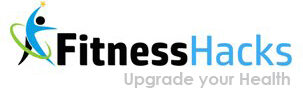
Belly fat also known as abdominal fat or visceral fat is a major risk and can be leading you to a host of metabolic disorders such as Type-2 diabetes, high blood pressure, cardiovascular diseases, and other conditions (1), (2).
Therefore losing it is the main target these days and the basics for most weight management programs.
However, if you believe that crunches, sit-ups, or sweating in the gym can help you achieve that in mere a few days, then you need to think again.
The mechanism leading to the accumulation of belly fat is not as simple as it seems, therefore the solution is also not that quick either. However, is that achievable? Yes! It is. As you understand the reason and work towards reversing the mechanism, it is very much possible.
Read on to know more about belly fat and ways to deal with this problem.
How to Get Rid of Belly Fat?

Potbelly, beer belly, middle-aged paunch, or a big belly, whatever you try to name it, the reality is belly fat is the harbinger of diseases. Because the associated health risks of this over-accumulation of fat, especially belly fat can be severe, you need to make changes in your lifestyle pretty soon.
Read more: What is Belly Fat or Visceral Fat?
These are aerobic exercise, healthy foods, stress-free life, intermittent fasting, and even low carb high fat, or ketogenic diet that can help your body shift from carbohydrate metabolism to fat metabolism.
The good news is “You can get rid of belly fat if you try hard!” In fact, with reduced total calorie intake and exercise you can not only lose weight but also stubborn belly fat.
7 Science-Backed Ways to Reduce Your Belly Fat are:
- Manage your stress
- Treat underlying medical causes such as Cushing’s Syndrome
- Aerobic exercises
- Low Carbohydrate High-Fat Diet (LCHF Diet)
- Intermittent Fasting (IF)
- Ketogenic diet
- High-Intensity Interval Training (HIIT)
1. Stress Management

Cortisol is a hormone produced by the adrenal glands (6). It is part of your body’s fight or flight response that mainly focuses on providing more energy to the body to adapt to the threat. Once this threat passes, it goes back to normal.
However, chronic stress or prolonged stress can keep this hormone elevated at all times (7). This results in the body producing more sugar as fuel. To do this, the body starts breaking down glycogen that provides glucose. As the condition continues and the body’s glycogen store depletes, your body starts breaking down muscle protein for glucose.
This mechanism results in three things:
1. High blood sugar in the blood (8)
2. Excess insulin production so that the cells can uptake this extra glucose. All this is done to give you the energy to escape the perceived stressful situation, however in reality that is not the case (9)
3. Insulin turns this glucose into fat (10)
Managing your stress can help reverse this process or prevent it altogether and help stop the accumulation of belly fat. Yoga and meditation can be a great way to keep you active as well as stress-free. To relieve stress, try to engage in a pleasurable activity.
2. Treat Underlying Medical Conditions Such as Cushing’s Syndrome or Hypercortisolism
Cushing’s syndrome is a condition that occurs due to prolonged exposure to high cortisol levels. Similar to stress, extra cortisol production is the underlying cause. However, it occurs because of a pathological situation (11), (12).
It can occur due to:
- Tumors: Tumours such as pituitary tumors, ectopic tumors, adrenal gland tumors
- Steroid drugs: Drugs such as cortisone or prednisone for inflammation
The tumor in the pituitary or the medicine that is taken to get respite for inflammatory diseases just as osteoarthritis or joint pain can lead to excess cortisol in the body.
The most common symptoms are (13):
- Fatty deposits, especially belly fat
- Subcutaneous fat accumulation
- Purple stretch marks on the arms, breasts, and thighs (collagen from the skin is been eaten up)
- Thin legs and flat butt (as the muscle protein here is a large muscle group is being eaten up from this place)
- Easy bruising ( tissue is very fragile, therefore any little bump can cause bruising)
- Buffalo hump
Treating Cushing Syndrome can help you deal with it and help you in reducing your fat deposition especially belly fat.
3. Aerobic exercise

Aerobic exercise often known as cardio is one of the great ways to tackle belly fat. It is a great way to reverse your energy source and force your body to start burning fat.
However, when you go to an aerobic class and exercise with a fast tempo, where you need to sweat and probably huff and puff as you are vying for “more sweat and more calorie loss”, you have unintentionally turned your aerobic into anaerobic exercise. This is what is happening:
- As you huff and puff, you have put your body under stress and have started making cortisols.
- This cortisol is triggering insulin and the two hormones together are putting the fat right back. You are actually making your condition worse.
- As your exercise is triggering cortisol, instead of burning your belly fat you have started depositing more and more.
- This has also put your body back to carbohydrate-burning mode instead of fat burning because of the extra sugar needed.
- As the carbohydrate store deletes, your food cravings increase. This you may curtail for a few weeks but eventually, you will give in to the temptation. You end up binge eating and feeling guilty for not being able to sustain the routine.
Remember! If you have a body type mentioned while discussing Cushing syndrome or if you have adrenal fatigue, do not do any exercise where you can’t catch your breath. The only exception is HIIT which we will be discussing in this article later.
You need to get over the idea of “no pain, no gain”. Remember pain is stress and stress means more cortisol. And this is not what you want to do.
Therefore, aerobic exercise is walking, easy bike riding, swimming, and jogging where you can talk, do yoga, or rollerblade. As you aren’t huffing and puffing, you are breathing slowly.
Your body is keeping up and you are exercising with air. When you are providing oxygen at the same rate as you burn fuel, your body breaks primarily fat. Huffing and puffing you burn carbohydrates.
In aerobics, you predominantly burn fat and this is what you can do for a prolonged duration. You can do this for 30 minutes or 60 minutes or 90 or even 120 minutes. This is also called low-intensity exercise and it is not exhausting. You are operating in your capacity. You are not running out of oxygen or fuel. This breaks down fat and helps remove belly fat.
4. Low Carbohydrate High-Fat Diet (LCHF Diet)
A low carb high-fat diet is a great way to force your body to start burning fat. In this diet, you take low carbohydrate, moderate protein, and high fat (14), (15). This method is often known as the “Banting Method” after a British man with the same surname who lost weight following this method.
Sugar and carbohydrates are the root cause of insulin secretion. The more you eat carbohydrates it increases your insulin production. That will stimulate your carbohydrate storage and fat storage.
This diet makes you eat less sugar. As you do that, you improve your insulin sensitivity. Studies have shown that the LCHF diet can promote fat burning, especially in the belly area. This is particularly true for visceral organs thus making you healthier (16).
5. Intermittent Fasting (IF)

Intermittent fasting is an eating pattern that cycles between fasting and eating. The fasting is usually for a prolonged duration such as 16 hours or even days. This depends upon the type of intermittent fasting you are following.
As this approach makes you generally eat fewer meals, it means your body automatically receives fewer calories.
Studies have confirmed that this way of eating forces your body to shift from carbohydrate metabolism to fat metabolism. This in layman’s terms means fat burning to produce energy as your glycogen store starts dwindling (17), (18).
As a result of the shift, your belly fat starts breaking too.
6. Ketogenic diet
In a keto diet, you typically take very low carbohydrates which are around 50 grams a day. As the body needs energy and exhausts the glucose available, it switches to glycogen stores. That too exhausts fast and there isn’t any more glucose to burn (19).
This takes the body to starvation mode and it switches to fat burning. In fact, this results in the release of ketone bodies that are used as an energy source. A lot of people swear by this form of diet and have experienced more satiety and energy.
As the fat starts burning, the belly fat goes through the same fate helping you lose that slowly (20).
7. High-Intensity Interval Training (HIIT)

HIIT might seem to be a bit of pain, but you are not doing this for a long time. You are doing it for 15s, or 30s, relax for some time and do it again.
On the whole, you need to do this for 5 minutes. You do increase the cortisol, but it is not too much. However, you do increase your heart rate to your peak maximum and increase your growth hormone by three to four times (21), (22).
Now, what it does do? The growth hormone is muscle sparing and it burns fats. You can reverse the mechanism. Even though there is a little cortisol production that lasts for a few minutes, you also produce high amounts of growth hormones that work for days.
And this makes it a highly effective tool for fat burning.
Before You Go…
Belly fat or visceral fat that attaches itself to the vital organs in the abdomen and in the empty spaces between them can cause a lot of harm to your body. It releases substances that are toxic and gradually pushes you to a host of metabolic disorders.
Therefore, knowing the right way to burn this fat is very crucial. The two hormones that increase fat accumulation in the belly are cortisol and insulin. It is very important to keep them under control to not only stop the process but to try and revert it.
Stress management, treating Cushing’s syndrome, and avoiding stressful situations can help you control your cortisol level. Carbohydrate-restricted diets such as LCHF Diets, ketogenic diets, and intermittent fasting can not only keep your insulin levels in check but force your body to revert the mechanism and start burning fat which also includes belly fat.
Aerobic exercise can also lead you to fat burning and a short burst of HIIT can increase your growth hormone to manifolds that help burn fat. Strength training is important too. These things on their own or together can effectively lead you to your goal.
